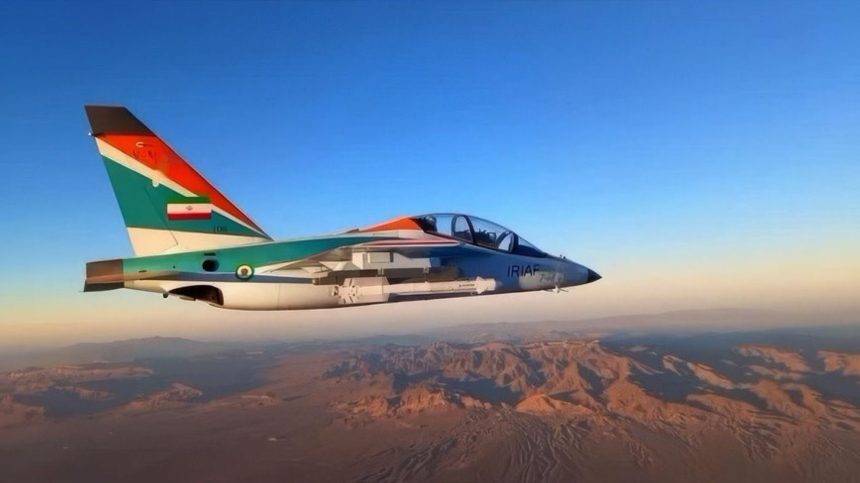On February 24, 2025, during the Zolfagar 1403 military exercises, Iran demonstrated a step in integrating new aerial capabilities by deploying its Yak-130 aircraft in operational missions. According to Mehr News, which reported the event, these drills involved all branches of the Iranian Armed Forces and took place over a wide area stretching from the northern Indian Ocean to the Makran coasts in southeastern Iran. It was within this framework that the Islamic Republic of Iran Air Force (IRIAF) tested the Yak-130 for the first time in an interception mission, marking a notable evolution in the aircraft’s role beyond its primary use as a trainer.

According to Brigadier General Alireza Sheikh, the spokesperson for the exercises, a Yak-130 was deployed alongside two MiG-29s to intercept and neutralize a drone simulating a hostile aircraft. In a coordinated approach, the MiG-29 pilots first detected and tracked the target before relaying the data to the Yak-130, which then successfully eliminated it using guided missiles. This operation demonstrated the IRIAF’s coordination and responsiveness, confirming the Yak-130’s ability to be integrated into aerial operations alongside heavier combat aircraft.
The Yak-130, developed by Russian manufacturer Yakovlev, is a subsonic twin-seat aircraft originally designed for advanced pilot training for modern fighter jets such as the Su-35 and Su-57. However, its modular design also allows it to perform light combat and reconnaissance missions. The aircraft features an advanced digital architecture, a modern avionics system, and the ability to simulate the flight characteristics of fourth- and fifth-generation fighters, replicating their aerodynamics and maneuverability. This makes it a versatile training platform while also providing a limited yet effective operational capability in real combat scenarios.
With its eight underwing hardpoints, the Yak-130 can carry up to 3,000 kg of ordnance. Its weapons suite includes a range of munitions, from unguided and guided bombs to B-8 and B-13 rocket pods, as well as a GSh-23 cannon pod, R-73 air-to-air missiles, and Kh-25 air-to-surface missiles. This configuration enables it to engage aerial and ground targets effectively while maintaining flexibility in asymmetric engagements.
